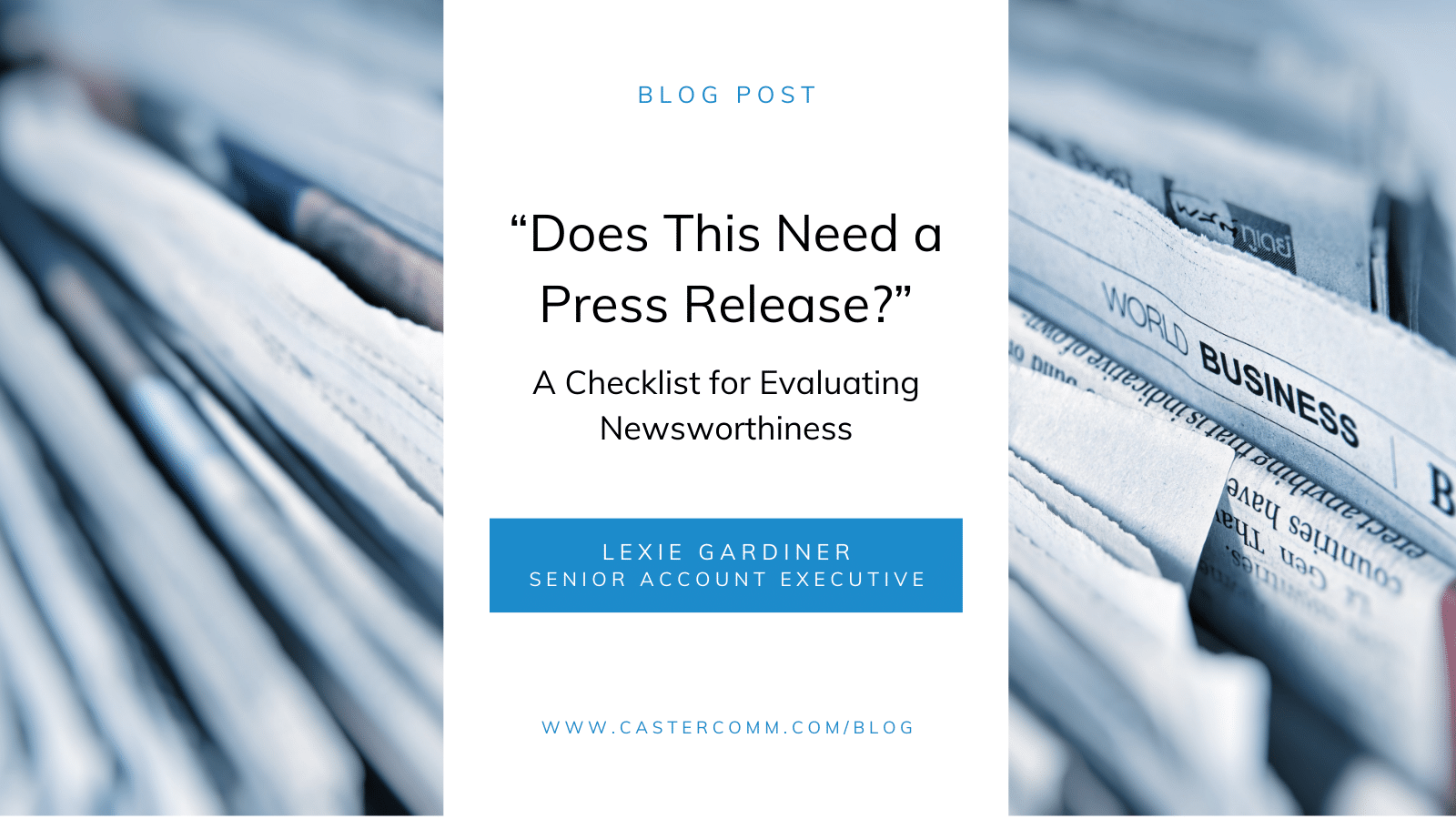
“Does This Need a Press Release?” A Checklist for Evaluating Newsworthiness
When a company has something to say, issuing a press release is often the go-to move. It’s understandable: press releases are a perfect vehicle for quickly, effectively, and accurately briefing the press on significant developments. I’ll be honest – they’re kind of awesome, and they’re one of my favorite genres to write.
While press releases might seem like the perfect solution for broadcasting your company’s news, you must not overuse this tool. Journalists juggle an avalanche of pitches daily, often receiving upwards of 21 per day! The media must carefully assess the value of your news to their audience, publication, and beat before deciding to cover it.
Here’s the tough love: Just because your news is significant and exciting for your company and its stakeholders, it may not be appropriate for the media to share with their audiences. This isn’t personal; it’s a matter of publication priorities, bandwidth and mission. If the announcement isn’t newsworthy to a journalist’s target audience, its publication is unlikely. Moreover, media outlets may begin to disregard future announcements, regardless of genuine newsworthiness, if you’ve previously overwhelmed them with irrelevant or uninteresting press releases.
Now – this isn’t to say that you should avoid press releases. Big news, like product launches, leadership changes, new service offerings and company milestones, are often worthy of media distribution. The challenge comes with sparingly selecting which news will most likely grab attention and make the cut. If you’re unsure how to determine newsworthiness, don’t sweat it. The Caster team has helped hundreds of clients determine the best course of action, and we have a journalist-approved checklist.
The Newsworthiness Checklist
1. Is my news timely?
Proper timing is essential to a successful press release. If the news is relevant to the present moment, it is a good time to send it out. However, if the news has already happened or is still months away, it may be best to hold off.
Of course, there are a few exceptions to this rule. For example, if your news is related to an upcoming event, such as a trade show or a grand opening, it is best to distribute your press release beforehand, so people have enough time to plan and act. Also, advance news is often welcome and acceptable during busy holiday periods.
2. Is my news significant?
In other words, “Will this news impact the lives of readers?” News distributed as a press release will most likely resonate if it offers readers something new—a product or service to try, a new event to attend, or a call to action that prompts behavioral change. Your news will more likely interest journalists if they believe their audience will benefit directly.
3. Is my news unique?
Remember: A press release’s primary objective is to inform the audience, so ensuring it has enough substance to catch the media’s attention is key to its success. News that has already been announced likely won’t gain traction a second time. The novelty of your news will help influence whether a news outlet is likely to cover it.
4. Is my news relevant?
Irrelevance is one of the top reasons pitches and press releases are ignored. Like I mentioned, journalists are busy, and their inboxes are often overflowing. Before drafting a release, evaluate whether the news will resonate with target journalists and their intended audiences.
5. Is my news clear, concise, and correct?
It might seem simple, but ensuring your key messages can be communicated clearly and concisely in the press release format is important to the decision to publish. If your writing is hard to follow or you have several pieces of news crammed into a single release, tighten up your topic or consider other genres. Press releases are also expected to adhere to a specific structure and follow the stylistic rules outlined by the Associated Press. Since a press release aims to inform, objectivity is also a requirement. Ensure your message is verifiable and accurate, and avoid presenting opinions as facts.
6. Does my news offer a human-interest angle?
News that includes real, third-party perspectives is often better received than news without human interest. While press releases should be objective, quotes from business leaders, customers or community members can lend credibility to news and help draw interest.
Don’t be discouraged if your next announcement doesn’t meet the newsworthiness criteria! Not every piece of news needs a primetime spot on the front page of a website or newspaper to achieve its purpose. Some news works best in a different genre, and there are plenty of alternatives to press releases—social media, blogs, newsletters, and much more—that can help you achieve the reach you need and prompt your audience to act.
If you’re planning a series of news rollouts and need help strategizing, we’re here to help! Contact us or check out our other blogs on news and content strategy.
